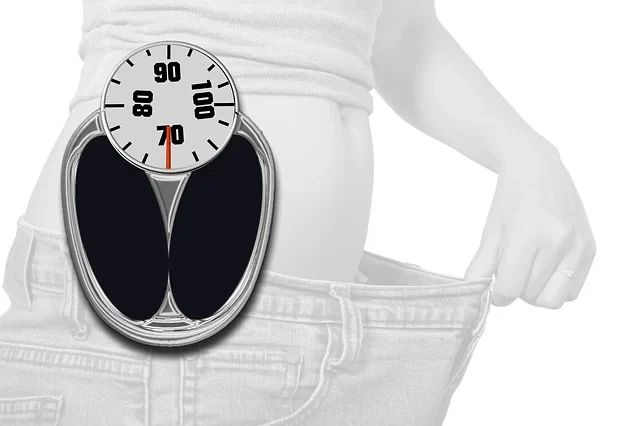Body Fat Percentage - Understanding and Optimizing Your Body Composition

A comprehensive guide to body fat percentage, including measurement methods, healthy ranges, and strategies for optimization.
Body Fat Percentage: Your Complete Guide
Body fat percentage is one of the most important metrics for understanding your body composition and overall health. This guide will help you understand what it means, how to measure it, and how to optimize it.
What is Body Fat Percentage?
Body fat percentage represents the proportion of fat mass to total body mass. It's a more accurate indicator of health and fitness than weight alone or BMI.
Healthy Body Fat Ranges
For Men
- Essential fat: 2-5%
- Athletes: 6-13%
- Fitness: 14-17%
- Acceptable: 18-24%
- Obese: 25%+
For Women
- Essential fat: 10-13%
- Athletes: 14-20%
- Fitness: 21-24%
- Acceptable: 25-31%
- Obese: 32%+
Methods of Measuring Body Fat
1. DEXA Scan
- Gold standard
- Uses X-ray technology
- Highly accurate
- Expensive
- Limited availability
2. Hydrostatic Weighing
- Very accurate
- Requires complete submersion
- Time-consuming
- Not widely available
3. Skinfold Calipers
- Affordable
- Widely available
- Requires skilled technician
- Accuracy depends on technique
4. Bioelectrical Impedance
- Convenient
- Affordable
- Results vary with hydration
- Less accurate than other methods
5. Body Circumference Measurements
- Simple to perform
- No special equipment needed
- Less accurate
- Good for tracking changes
Factors Affecting Body Fat Percentage
1. Diet
- Caloric balance
- Macronutrient distribution
- Food quality
- Meal timing
2. Exercise
- Type of training
- Frequency
- Intensity
- Duration
3. Hormones
- Testosterone
- Estrogen
- Thyroid hormones
- Cortisol
4. Lifestyle
- Sleep quality
- Stress levels
- Recovery
- Daily activity
Strategies for Reducing Body Fat
1. Create a Caloric Deficit
- Calculate your TDEE
- Reduce by 20-25%
- Track food intake
- Adjust based on results
2. Optimize Protein Intake
- 1.6-2.2g per kg body weight
- High-quality sources
- Even distribution throughout day
- Essential for preserving muscle
3. Implement Progressive Training
Resistance Training
- Compound exercises
- Progressive overload
- 3-5 sessions per week
- Focus on form
Cardiovascular Training
- Mix high and low intensity
- 2-4 sessions per week
- Include both steady state and intervals
- Adjust based on recovery
4. Improve Recovery
- 7-9 hours sleep
- Stress management
- Adequate hydration
- Active recovery
Common Mistakes in Fat Loss
- Excessive caloric restriction
- Neglecting protein intake
- Over-relying on cardio
- Inconsistent tracking
- Unrealistic expectations
The Role of Muscle Mass
Building and maintaining muscle is crucial because:
- Increases metabolic rate
- Improves insulin sensitivity
- Enhances functional strength
- Creates athletic appearance
- Supports long-term health
Nutrition for Fat Loss
Macronutrient Distribution
- Protein: 30-35%
- Carbohydrates: 40-45%
- Fats: 20-25%
Food Choices
Protein Sources
- Lean meats
- Fish
- Eggs
- Dairy
- Legumes
Carbohydrate Sources
- Vegetables
- Whole grains
- Fruits
- Legumes
- Root vegetables
Fat Sources
- Avocados
- Nuts and seeds
- Olive oil
- Fatty fish
- Eggs
The Impact of Hormones
Optimizing Hormonal Balance
- Maintain adequate fat intake
- Get sufficient sleep
- Manage stress
- Regular exercise
- Proper recovery
Tracking Progress
Weekly Measurements
- Weight
- Body measurements
- Progress photos
- Performance metrics
- Energy levels
Monthly Assessments
- Body fat measurements
- Clothing fit
- Health markers
- Fitness tests
Plateaus and Solutions
Common Causes
- Adaptive thermogenesis
- Insufficient recovery
- Hidden calories
- Reduced activity
- Stress
Breaking Through
- Diet breaks
- Reverse dieting
- Training variation
- Increased NEAT
- Sleep optimization
Maintaining Results
Long-term Strategies
- Gradual transitions
- Sustainable habits
- Regular monitoring
- Lifestyle balance
- Support system
Special Considerations
Athletes
- Performance priorities
- Periodization
- Sport-specific needs
- Recovery demands
Health Conditions
- Medical supervision
- Medication effects
- Modified approaches
- Regular monitoring
Conclusion
Optimizing body fat percentage is a journey that requires:
- Understanding your body
- Consistent effort
- Patient progression
- Regular monitoring
- Lifestyle balance
Focus on sustainable approaches and remember that health comes first. Use this guide to create an effective plan for reaching and maintaining your ideal body composition.

